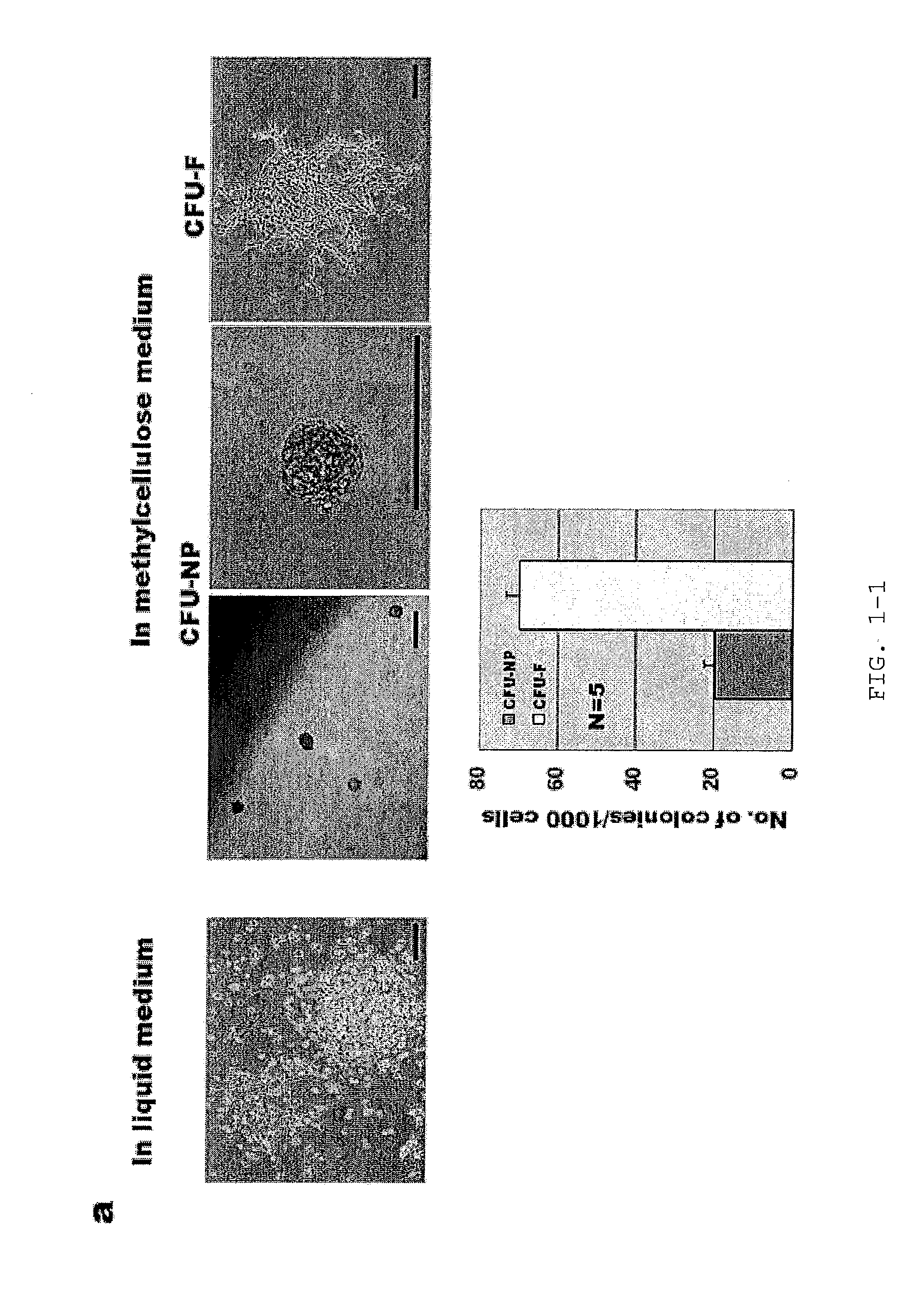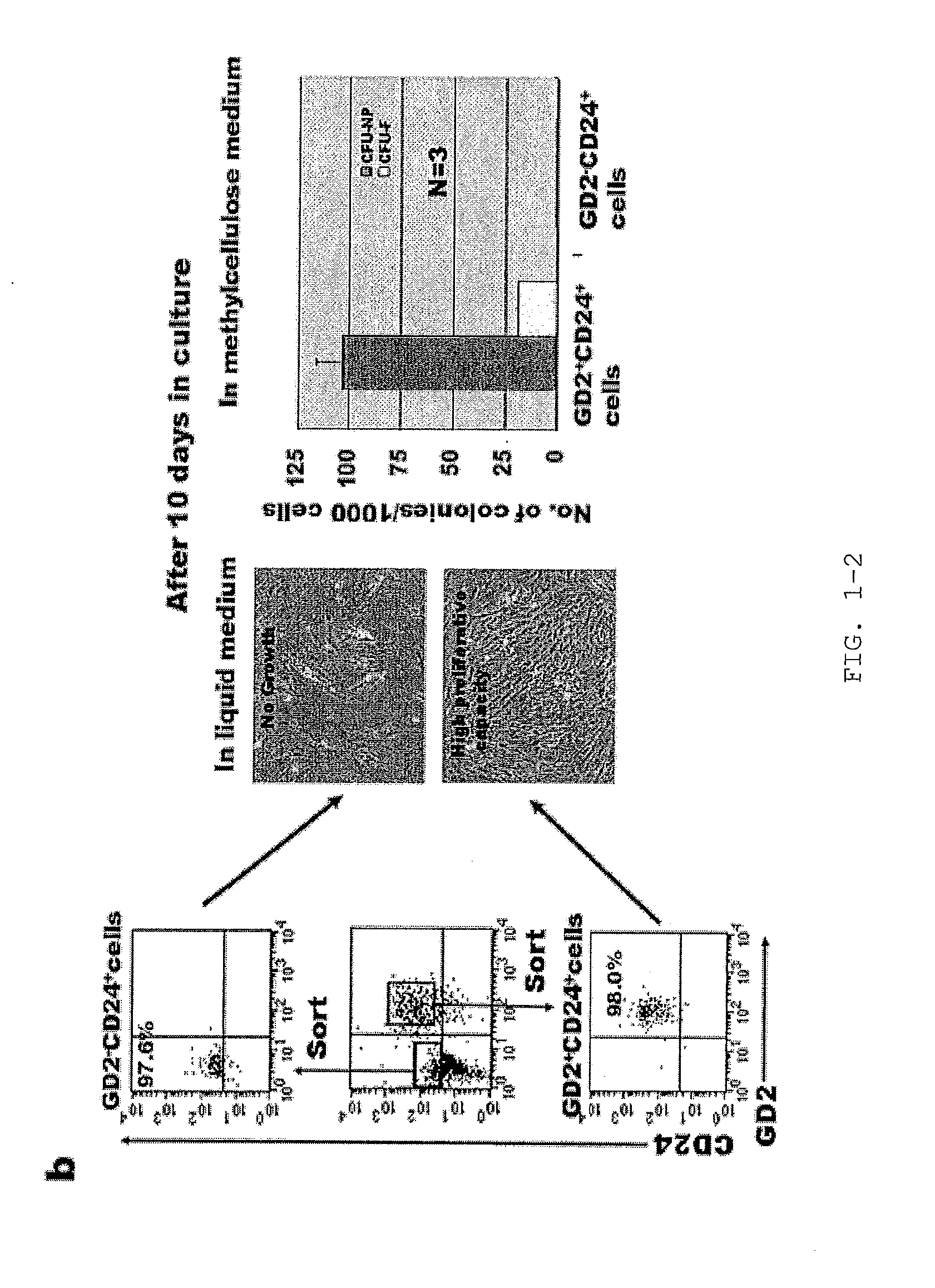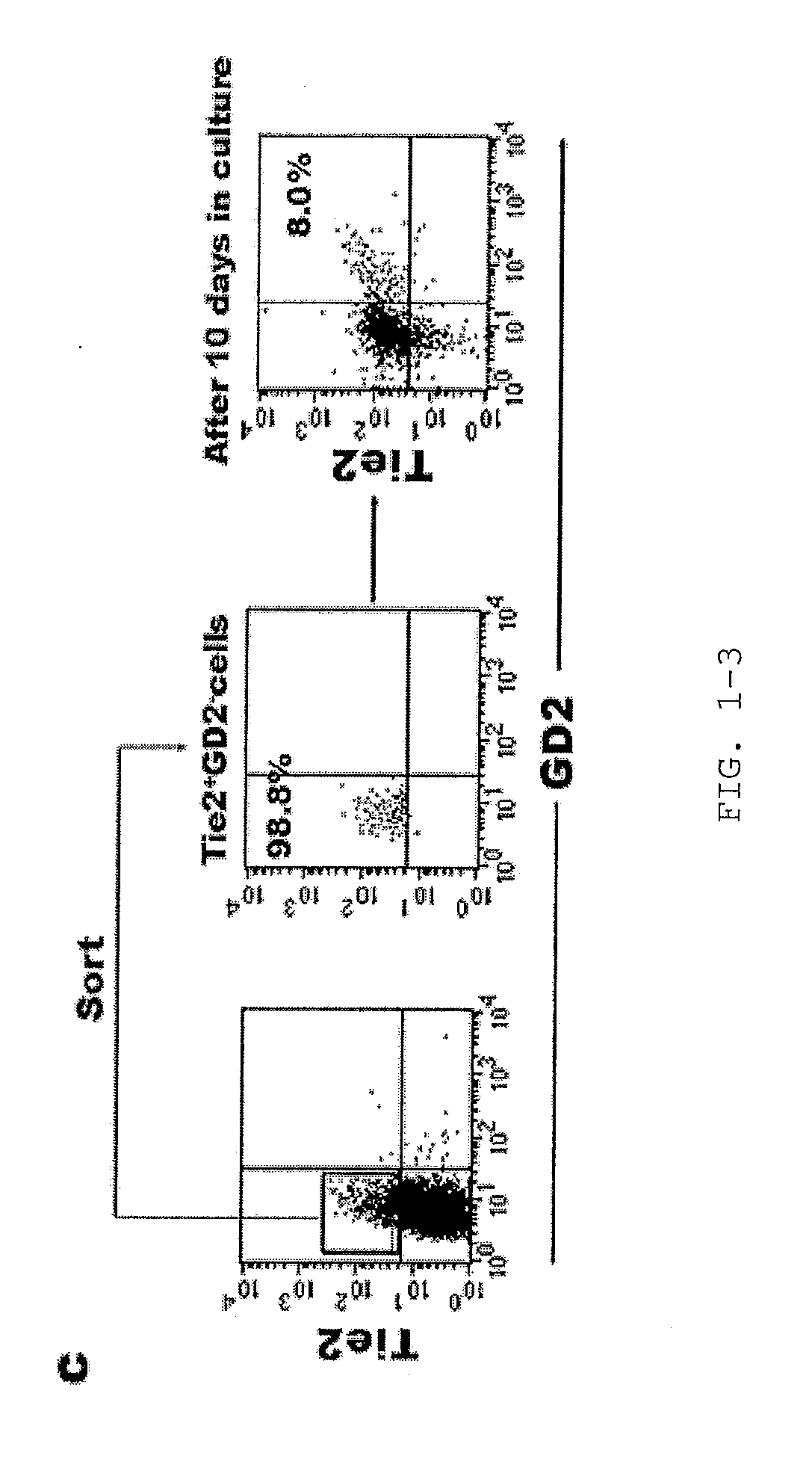Intervertebral Disc Nucleus Pulposus Stem Cell/Progenitor Cell, The Cultivation Method And Intended Use Thereof
- Summary
- Abstract
- Description
- Claims
- Application Information
AI Technical Summary
Benefits of technology
Problems solved by technology
Method used
Image
Examples
examples
Materials and Method
[1] Mice
[0101]P0-Cre / Floxed-EGFP mice and Wnt-Cre / Floxed-EGFP mice were obtained according to the method mentioned in the previous paper14. Nonobese diabetic / severe combined immunodeficient mice (NOD / SCID) used as recipients of the transplant experiment were purchased from Clair Japan. These mice were raised in an isolator in the animal experiments laboratory at the Tokai University School of Medicine, and were provided for the experiment. Animal experiments using these mice were carried out with the approval of the animal experiment committee of Tokai University.
[2] Collecting the Mouse Nucleus Pulposus Cells
[0102]The mouse NP tissue was collected from the caudal intervertebral disk under a surgical microscope. Simply, after removing the caudal epidermis and soft tissues, an incision was made between the cephalic endplate and the intervertebral disk and the intervertebral disk was collected. Subsequently, the gelatin-like NP tissues alone were collected using a ...
PUM
| Property | Measurement | Unit |
|---|---|---|
| Composition | aaaaa | aaaaa |
Abstract
Description
Claims
Application Information
 Login to View More
Login to View More - R&D
- Intellectual Property
- Life Sciences
- Materials
- Tech Scout
- Unparalleled Data Quality
- Higher Quality Content
- 60% Fewer Hallucinations
Browse by: Latest US Patents, China's latest patents, Technical Efficacy Thesaurus, Application Domain, Technology Topic, Popular Technical Reports.
© 2025 PatSnap. All rights reserved.Legal|Privacy policy|Modern Slavery Act Transparency Statement|Sitemap|About US| Contact US: help@patsnap.com



